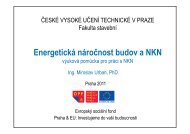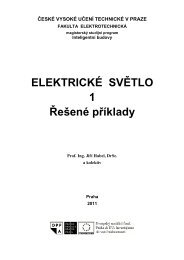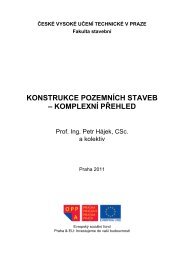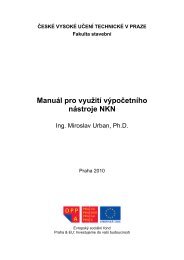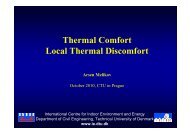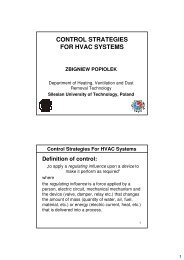Buses, Protocols and Systems for Home and Building Automation
Buses, Protocols and Systems for Home and Building Automation
Buses, Protocols and Systems for Home and Building Automation
You also want an ePaper? Increase the reach of your titles
YUMPU automatically turns print PDFs into web optimized ePapers that Google loves.
2. Closed systems<br />
Evropský sociální fond. Praha & EU: Investujeme do vaší budoucnosti.<br />
Closed building automation systems or proprietary systems are typically focused on family<br />
<strong>and</strong> small houses. There exit tens of these systems on the market today. They are developed<br />
not only by “no name” producers, but also by traditional companies like ABB or<br />
Moeller/Eaton. Components <strong>for</strong> these systems are often offered in hobby retail chains like<br />
OBI, Hornbach <strong>and</strong> Baumax, <strong>and</strong> in most cases they are cheaper than any system based on<br />
an open st<strong>and</strong>ard.<br />
Closed systems are usually complex, so they can solve all the basic tasks of home automation<br />
– HVAC, light <strong>and</strong> shutter/blinds control, remote control (PC, PDA, phone) <strong>and</strong> so on. A<br />
disadvantage is that they offer only very limited possibilities in functions, interconnections or<br />
designs of devices. An advantage of this kind of systems is that they often do not need any<br />
special training <strong>for</strong> installation <strong>and</strong> programming (often without PC, only using a<br />
screwdriver). We can find centralized, distributed <strong>and</strong> also hybrid closed systems.<br />
Closed systems are based on a proprietary communication protocol with wired (Nikobus) or<br />
wireless connection (Xcom<strong>for</strong>t, Conrad FS20 <strong>and</strong> <strong>Home</strong>Matic). Wireless closed systems are<br />
becoming very popular today because their price is comparable to the price of a wired<br />
solution with the advantage of easier installation (especially <strong>for</strong> older houses). Also more<br />
<strong>and</strong> more producers start to offer systems with both types of communication – wired <strong>and</strong><br />
wireless (iNels).<br />
2.1. ABB Ego-N<br />
Fig. 2.1.1: ABB Ego-n (1)<br />
Ego-n (2) is a centralized bus building automation system focused mainly on family houses. It<br />
has its origins in the Czech Republic. The bus is physically realized by a 4-core cable with 2<br />
cores <strong>for</strong> data <strong>and</strong> 2 cores <strong>for</strong> a power supply to the devices. There exist two types of buses<br />
(Fig. 2.1.2): primary (max 700m length) <strong>and</strong> secondary (max 2000m length). The primary bus<br />
connects sensors <strong>and</strong> actors (up to 64 devices on the bus) with a central control unit. The<br />
secondary bus is optional <strong>and</strong> it connects up to 8 central control units, a GSM unit, a unit of<br />
logic functions, a TCP/IP module <strong>and</strong> other high-end devices.<br />
Ondřej Nývlt - <strong>Buses</strong>, <strong>Protocols</strong> <strong>and</strong> <strong>Systems</strong> <strong>for</strong> <strong>Home</strong> <strong>and</strong> <strong>Building</strong> <strong>Automation</strong> 7




